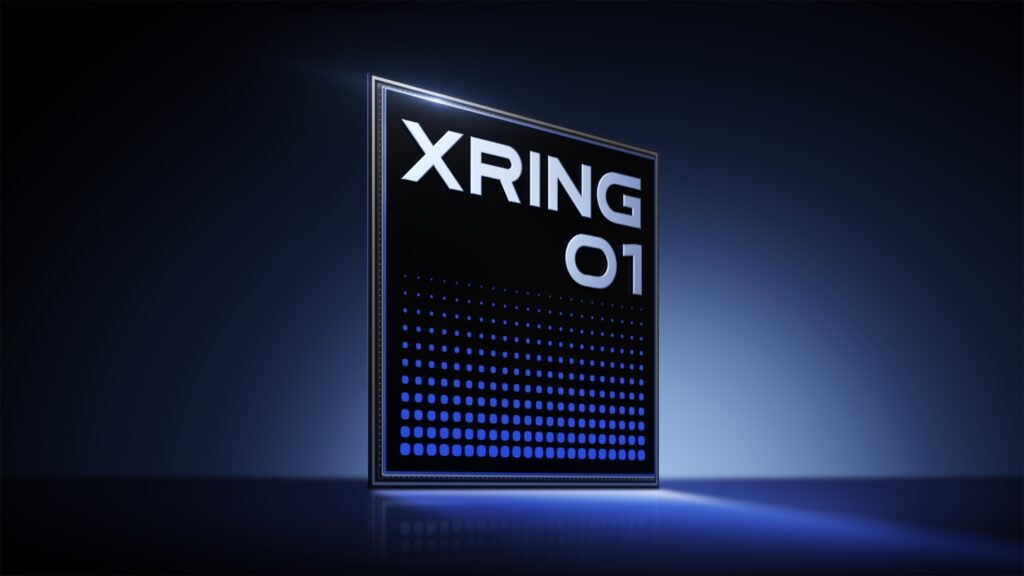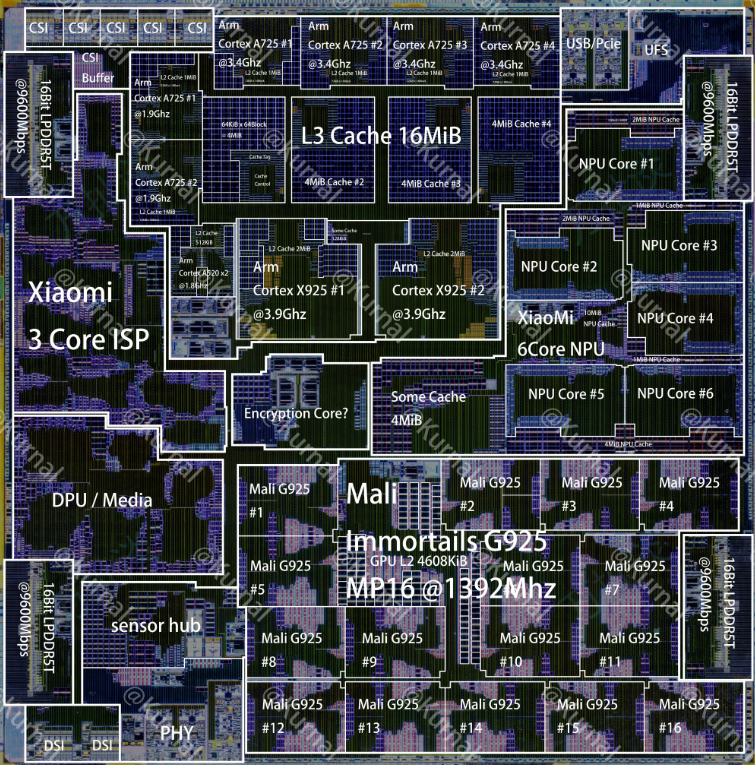
A die shot of Xiaomi’s Xring O1 SoC showcases its compact 114.7mm² design on TSMC’s cutting-edge 3nm N3E node. Matching the Snapdragon 8 Elite in Geekbench, this chip powers the Xiaomi 15S Pro and Pad 7 Ultra. In fact, the Xring O1 in the Xiaomi 15S Pro even outscored the Snapdragon 8 Elite in an AnTuTu test.

Xiaomi’s Xring O1 SoC has garnered attention for its competitive performance and efficient design, revealed through a detailed die shot by Kurnalsalts and Geekerwan. Built on TSMC’s N3E 3nm node—also used by Apple’s A18 Pro and MediaTek’s Dimensity 9400—the Xring O1 spans 114.7mm², with 109.5mm² utilized, making it one of the smallest flagship smartphone chips, rivaling the A18 Pro’s size.
Xring O1’s core cluster:
The die is dominated by a 10-core CPU (2x Cortex-X925 at 3.9GHz, 4x Cortex-A725 at 3.4GHz, 2x Cortex-A725 at 1.89GHz, 2x Cortex-A520 at 1.8GHz) with 16MB L3 cache, delivering Geekbench 6 scores of ~3,119 single-core and ~9,673 multi-core, edging out the Snapdragon 8 Elite in some tests. A 6-core NPU with 16MB cache handles 44 TOPS for AI tasks, while the Arm Immortalis-G925 MP16 GPU ensures robust graphics performance, scoring 330 FPS in GFXBench Manhattan 3.1, per ComputerBase. The in-house ISP and LPDDR5T-9600 modules enhance imaging and memory performance.

Notably, the Xring O1 lacks an integrated 5G modem, relying on an external MediaTek radio, which shrinks the die size but may impact power efficiency. This design mirrors Qualcomm and MediaTek rivals but highlights Xiaomi’s strategic trade-offs. With TSMC’s N3E enabling high clock speeds and efficiency, the Xring O1 is expected to redefine Xiaomi’s flagship competitiveness. The teardown offers a glimpse into its potential.
Don’t miss a thing! Join our Telegram community for instant updates and grab our free daily newsletter for the best tech stories!
For more daily updates, please visit our News Section.
Source: Kurnalsalts | Geekerwan
The post Xiaomi’s Xring O1 die shot reveals its core layout appeared first on Gizmochina.








